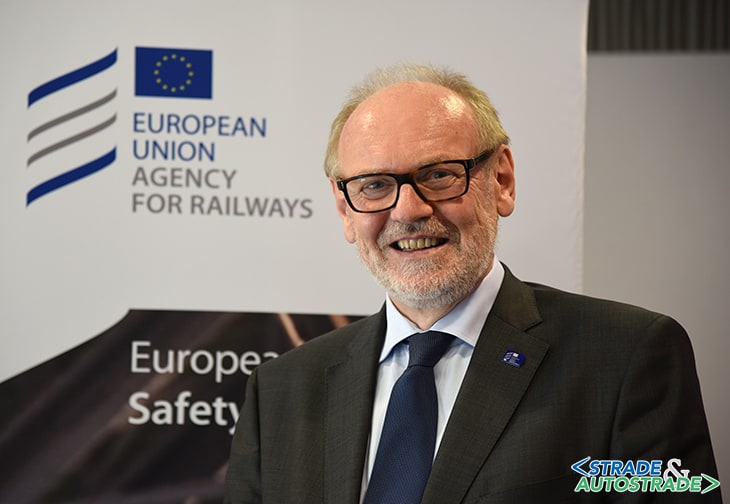![]() Doppelbauer – Per la versione in Italiano: https://www.stradeeautostrade.it/incontri-e-interviste/josef-doppelbauer-luomo-che-abbatte-le-barriere-nel-trasporto-ferroviario-internazionale/
Doppelbauer – Per la versione in Italiano: https://www.stradeeautostrade.it/incontri-e-interviste/josef-doppelbauer-luomo-che-abbatte-le-barriere-nel-trasporto-ferroviario-internazionale/
For our new front page interview we invited one of the world’s leading international experts of rail transport, Josef Doppelbauer, Executive Director of ERA (European Union Agency for Railways), to answer our questions.
Taking advantage as in previous occasions of the possibilities offered by remote communication – even more valuable in this period, in which the alert for the pandemic from Covid-19 persists – we had the opportunity to discover an atypical and brilliant personality, starting with his academic and professional path.
After a ph.D. in Physics, Doppelbauer embarked on a career that saw him occupy prominent positions in various research centres before landing in the world of transport with the company Bombardier, in which – as he proudly points out – he contributed as CTO to the development of high-speed trains, including the Italian Frecciarossa.
Trains, as he told us during the interview, have been his main passion since his childhood years, spent with the nearby presence of a railway. In the following questions we discuss with him various aspects of this subject, including those related to the pandemic and the changes that it has entailed in the transport modalities of the European population.
“Strade & Autostrade”: “What is ERA and what does it do?”.
“Josef Doppelbauer”: “The European Union Agency for Railways was established in Valenciennes (offices) and Lille (meeting facilities), both in the north of France, in 2004. Its approx. 200 staff represent more than 22 European Member States and speak multiple languages.
ERA has been providing EU Member States and the European Commission with technical assistance in the development and implementation of the Single European Railway Area (SERA).
This comprises enhancing technical interoperability and harmonising rules, promoting simplified access for customers, developing a common approach to safety and safety culture, advising on telematics applications and ERTMS (European Traffic Management System), monitoring National Safety Authorities and Notified Bodies and facilitating the exchange of information between the railway actors in Europe.
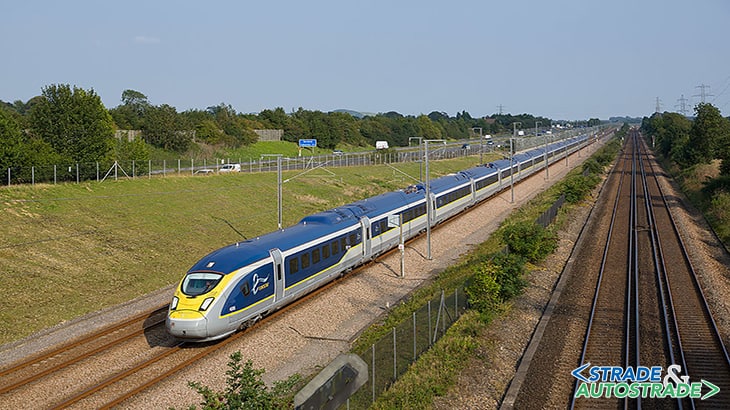
Since 16th June 2019 the EU Agency for Railways is mandated to issue single safety certificates and vehicle (type) authorisations valid in multiple European countries and to ensure an interoperable European Rail Traffic Management System. The purpose of these activities is expressed by the slogan “Making the railway system work better for society””.
“S&A”: “How do European citizens benefit from the work ERA does?”.
“JD”: “By standardising and harmonising technical rules, the Agency is removing technical barriers to international rail traffic. Being since June 2019 the European certification and authorisation entity for cross border rail traffic makes obtaining international vehicle authorisations and safety certificates easier, quicker and cheaper.
In addition our experts develop together with the sector technical solutions and rules to make travel for persons with reduced mobility easier, to improve European ticketing, to reduce noise of freight wagons, etc.. ERA activities promote and help to improve the safety of railways in Europe.
Last but not least, the work of the Agency helps to create better and faster connections within Europe and enhancing rail transport, being currently the most sustainable and environmentally friendly means of transport”.
“S&A”: “What is the current state of advancement of the TEN-T Networks and which scenarios do you expect for the coming years?”.
“JD”: “Since the 1990s, the Trans-European Transport Network (TEN-T) is a symbol for connectivity and accessibility for all regions of the European Union. TEN-T projects exist in every EU Member State and include all aspects of transport: road, rail, inland waterways, maritime, and air.
TEN-T may be seen as a collection of megaprojects, in particular for politically driven infrastructure investment such as big tunnel projects. The idea behind TEN-T is that development of transport services will support a balanced development of the European Union, consolidating its political and economic unity.
Over the years, the network approach has seen transport policy changes, an evolution of demand, and geopolitical developments. On the geopolitical side, China’s Belt and Road Initiative, announced in late 2013, includes the construction of land-based transport connections between Asia and Europe.
Within the European Union, it will interact with infrastructure and services provided by the TEN-T Network programme. This development may result in changes in relative accessibility and competitive attractiveness of different maritime and landlocked regions of Europe.
Presently, transport in Europe is facing unprecedented challenges, not only because of the COVID-19 pandemic, but also in the context of sustainability and green mobility. The European Commission started a review process on TEN-T review in 2019 with an evaluation of the existing TEN-T Regulation together with an Open Public Consultation.
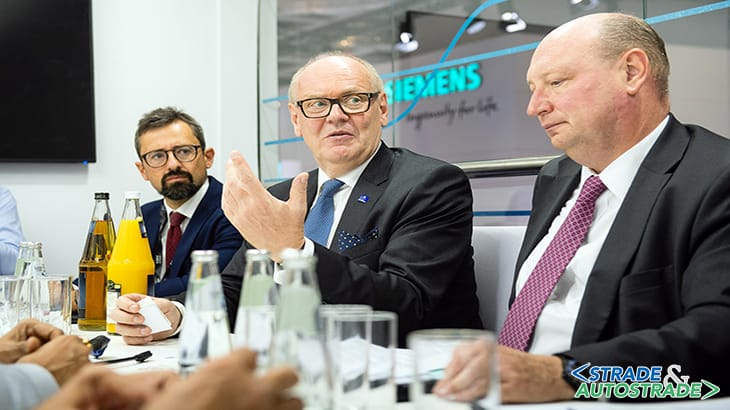
A summary of the results of the full evaluation will be published towards the end of 2020. In line with the action plan for the European Green Deal, a proposal for a revision of the TEN-T Regulation is planned in the second quarter of 2021.
The objective of making transport more sustainable, in particular by reducing energy consumption and CO2 emissions, will require better interoperability of different transport modes and the creation of integrated multimodal transport chains, coordinated across borders and transport modes. With the renaissance of night trains and a renewed focus on long-distance passenger trains, we will possibly see a higher importance of passenger rail transport along TEN-T corridors”.
“S&A”: “What do you think of the conclusion of the new alpine crossing with the opening of the Ceneri base tunnel?”.
“JD”: “Together with the Gotthard base tunnel that opened in 2016, the recently opened Ceneri base tunnel makes the alpine crossing through Switzerland on the Rhine-Alpine Corridor more efficient, by cutting travel time, increasing capacity, and reducing energy consumption.
The tunnel is both of local (enabling faster train connections in the Italian speaking part of Switzerland) and European importance, as a major contribution to improve cross-alpine rail freight, but also to make international passenger trains more attractive.
However, Ceneri is only a part of a long corridor: even though transit time through the Alps has been reduced, delays on other parts of the corridor still hamper the benefits (time-savings) the tunnel could bring”.
“S&A”: “We ask you if you can take stock of the situation with the Italian railway corridors: at what point, in particular, are the Mediterranean Corridor, the Rhine-Alps Corridor and the Scandinavian-Mediterranean Corridor, and which solutions would you suggest to speed up the works?”.
“JD”: “The nine Core Network Corridors, each led by a European coordinator and supported financially by Connecting Europe Facility (CEF) have set the agenda for European railway infrastructure policy.
Core network corridors rest on three pillars: modal integration, interoperability, and the coordinated development of infrastructure. Corridors are interconnected, as they cross each other – in Italy, you find the Mediterranean Corridor, the Rhine-Alps Corridor and the Scandinavian-Mediterranean Corridor, which overlap on certain sessions.
Therefore, in order to accelerate works, the individual corridors need to work together closely, and align with the national authorities in order to define priority investments”.
“S&A”: “If you could explain to a decision-maker the main advantages of rail crossings, which ones would you focus on?”.
“JD”: “On the issues that are also the basis of ERA and its role, which I spoke about in the answer to the first question. Faster and more efficient international rail transport, making rail more attractive for both passengers and freight customers.
Shifting from congested roads to rail means less CO2 emissions, less congestion, less noise for people living alongside the roads and motorways, less accidents”.
“S&A”: “Do you think that the different gauge still existing between the railways of some countries represents a problem in the development of the Corridors?”.
“JD”: “The coexistence of two gauges (1.668 mm in Spain and 1.435 mm in the other countries) is a specific challenge for the Mediterranean Corridor, which needs to be tackled particularly as regards the financial aspects.
In Spain, several projects listed in the Spanish implementation plan aim at solving this challenge on most of the conventional lines of the Corridor, rather by upgrading to mixed gauge through a third rail or establishing new UIC gauge lines.
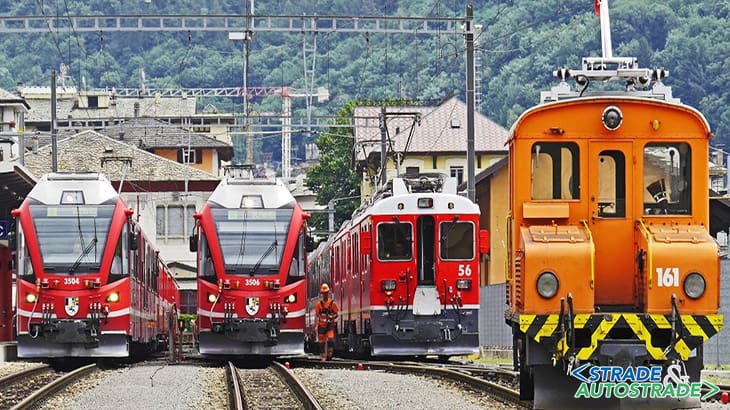
In addition, on this corridor three different voltages are in use, raising the issue of interoperability: (1.5kV DC in France, 3kV DC (in Spain, Italy, and Slovenia), 25 kV AC (on high-speed lines in France, Italy and Spain)”.
“S&A”: “You have been involved since the Nineties – with a primary role – in the development of ERTMS (European Rail Traffic Management System): what is the current situation in this area?”.
“JD”: “ERTMS is legally agreed by 28 Member States including the UK to be implemented as the basic system for all. The deployment of the full interoperability system will be along the lines of the nine European Core Network Corridors, which are getting operational.
The European deployment plan has been officially adopted and it includes very ambitious targets based on the priority to make the railway undertakings (RUs) competitive on an efficient and compliant EU infrastructure. Last but not least: the funding of the program agreed by the European Commission and the Member States allocates significant financing means for the realisation of the plan”.
“S&A”: “As regards Italy, how do you judge – from a railway point of view – the idea of the possible splitting of traffic flows in the Strait of Messina and the various alternatives (for example an underwater tunnel for road traffic and a railway bridge) which have been hypothesized?”.
“JD”: “This is a 50 million euro question: this is the amount of money the Italian government is discussing to finance the necessary feasibility study, including the option to split the traffic between a rail bridge and an underwater road tunnel.
Road and rail are not in competition, they are essential infrastructure for a sustainable economic and social development, Italy has given a clear message with the decision to combine ANAS and RFI under the same holding.
The feasibility, design, construction and operation phases of this important infrastructure projects can benefit from the synergies that the rail sector can bring in terms of experience in the design and operation of critical infrastructural links on national and international scale”.
“S&A”: “Do you believe that, after the emergency of these months, the security measures adopted for Covid-19 pandemic will lead to a definitive rethinking of the use of rail vehicles and to lower filling coefficients? Is there a risk of a general return of european citizens to private road vehicles?”.
“JD”: “First of all rail freight has proven to be most reliable (compared to road and air) during the lockdown period. For passenger services, we now have indications that the risks of transfer of the virus in trains seem to be limited, as you can also see from the Rail Covid-19 Protocol issued by ERA and ECDC in July 2020, and from the covid-19 Information Bulletin on Ventilation in trains published by ERA in September 2020.
As a general statement, when safety and security of a particular trip need to be assessed, one should consider the overall level of safety of traveling, and not only the risks of becoming infected by Covid-19.
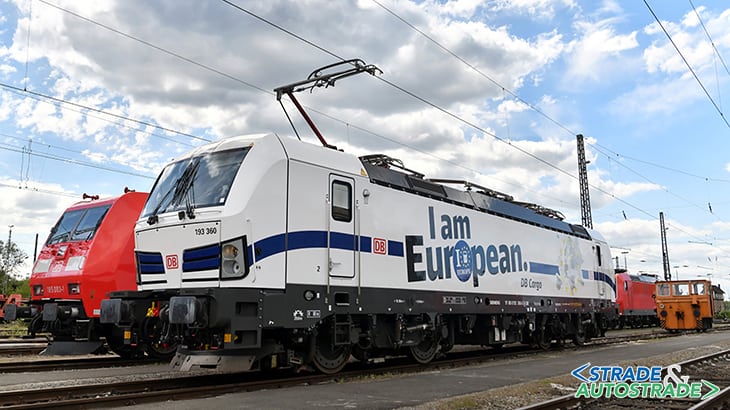
We are not sure that the pandemic alone will lead to a considerable behavioural change. We expect that after return to normal, people will return to traveling as they did before the pandemic. In addition other driving forces have to be taken into account and supported to attain a modal shift from road to rail:
- we may see slightly less home-work travel due to more teleworking and teleconferences, and people might have become used to take the bicycle for short distances. The main reason is that access to areas where typically office buildings are located, travel by car is usually heavily affected by traffic jams and lack of car-parking space;
- more awareness about climate change and the necessity of a modal shift from road transport to rail may motivate people to look for alternatives to car driving;
- innovation could support the modal shift as well: e.g. ERTMS deployment to allow more trains on the tracks (capacity), automatic coupling to save shunting time, digitalisation to improve customer information and service, etc.;
- political measures: abolish kerosine subsidies, lower rail track charges to make railways more competitive compared to other transport modes.
For the moment, it is too early to give a clear and definite answer given the uncertainties surrounding the pandemic. There is evidence available that European citizens have in the short term adjusted their mobility patterns during the past months since the start of the pandemic.
In particular, public transport travel incl. rail still seems to be below pre-Covid levels whereas car travel has been faster to recover and cycling has increased significantly.
On the other hand it is likely that, as the pandemic will fade over the coming period (especially when an effective vaccine would be available), the use of public transport is likely to recover.
Over a longer term perspective, a further shift towards rail (and other forms of public transport) is more than possible, especially in the context of the urgent need to deal with climate change as highlighted by the Commission’s Green Deal. In particular, this is critical given the likely close connection between the risks of future pandemics and climate change”.
We therefore thank Josef Doppelbauer for sharing with us his thoughts and predictions for the future of rail transport, dictated both by a long experience in this area and, as mentioned above, by a very early passion for trains.
On the sidelines of this interview, Doppelbauer also told us how rail and public transport have become over the years and remain his preferred modes of transportation for business travel. He also confessed to us that some of the best ideas came to him during some of his train trips, for example while he was preparing his presentation for a conference.
Our whish, both for him and for each of us, is that we can all return soon to travel and participate to meetings in physical presence, without any more fears for the future.
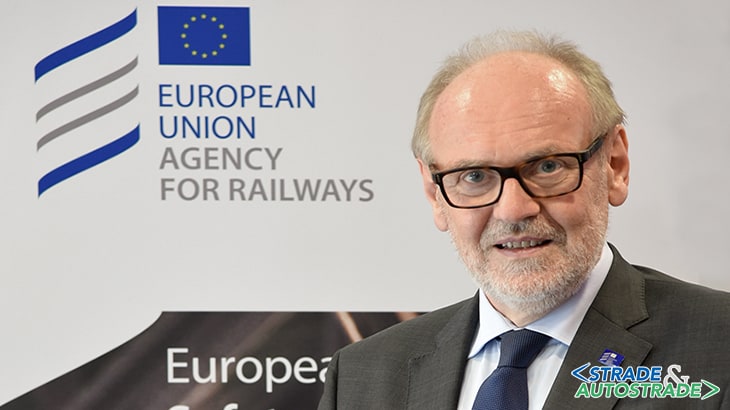
Curriculum Vitae of Josef Doppelbauer
Josef Doppelbauer joined the Agency in January 2015. His mission is to further consolidate the role and responsibilities of the European Union Agency for Railways to become a world leader in railway safety.
Before leading the Agency, Josef DOPPELBAUER held managerial positions at Bombardier Transportation. Since the early 1990’s, he has been involved with the development of the European Rail Transport Management System (ERTMS). From 2012 to 2014, he was Chairman of the European Rail Research Advisory Committee (ERRAC), the European technology platform of the rail sector. From 2011 to 2014, he was also the Chairman of the Steering Committee of the Joint Technology Initiative Shift2Rail.
Josef Doppelbauer holds a degree and a doctorate, both in Physics. He started his career at the Alcatel Research Centre in Vienna, Austria, where in 1997 he became Technical Director. In 2001, he moved to Paris to become Chief Technical Officer for Alcatel Transport Automation Solutions.
Doppelbauer joined Bombardier Transportation in December 2002, first working in the Rail Control Solutions division, where he held several positions in Engineering, Sales, and as President.
In 2008, he moved on to the global headquarters of Bombardier Transportation in Berlin. From July 2008 to June 2012, he was appointed Vice President Project Management, and from July 2008 to December 2013, Chief Technical Officer responsible for leading the standardization of processes, tools and products, product safety and critical projects support. Between January 2014 and December 2014, he held the position of Vice President Research and Technology at Bombardier Transportation.
Josef Doppelbauer has 25 years of experience in key aspects of railway technology, including signalling and control command systems. He is married and father of two sons, with private interests including classical music, photography, and soft sports like hiking, cycling and ski.
![]() Per la versione in Italiano: https://www.stradeeautostrade.it/incontri-e-interviste/josef-doppelbauer-luomo-che-abbatte-le-barriere-nel-trasporto-ferroviario-internazionale/
Per la versione in Italiano: https://www.stradeeautostrade.it/incontri-e-interviste/josef-doppelbauer-luomo-che-abbatte-le-barriere-nel-trasporto-ferroviario-internazionale/

